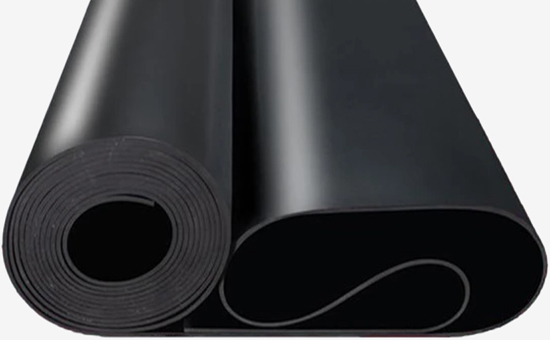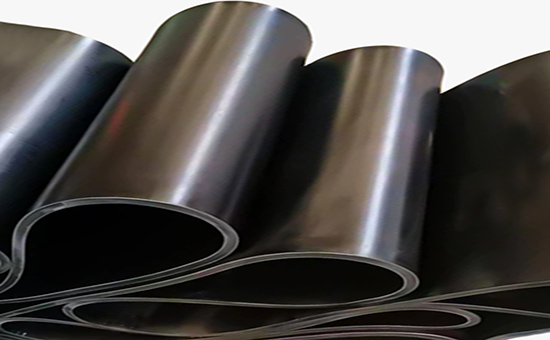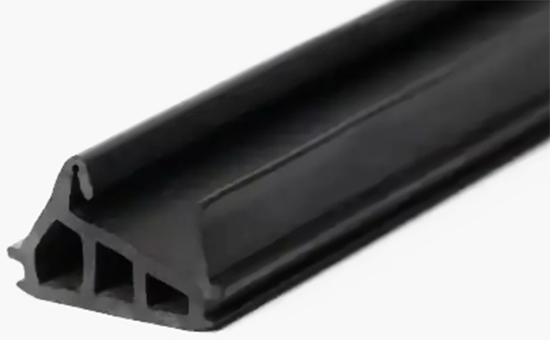
Rubber heat resistance refers to the ability of rubber and its products to maintain physical and mechanical properties and service performance after long-term thermal aging. Rubber products work in a high-temperature environment for a long time, and the rubber material needs to have good heat resistance. Recycled rubber E5LYY312 as an ideal raw material to replace high-priced raw materials on the market, which can be used alone or in combination with corresponding varieties of raw rubber to produce heat-resistant rubber products, effectively reducing raw material costs. When using recycled rubber to produce heat-resistant rubber products, the design of the softening plasticization system is crucial.
1. Selection principle of softening plasticizer for heat-resistant recycled rubber products
The heat resistance of recycled rubber is related to the volatility of softeners and plasticizers and the stability at high temperatures, and the relative molecular weight of softening plasticizers is low, which is easy to volatilize or migrate and exude at high temperatures, resulting in an increase in the hardness and elongation of vulcanized plasticizers of recycled rubber. When choosing softening plasticizers for heat-resistant recycled rubber products, the following principles need to be followed: (1) stable at high temperatures; (2) Low volatility; (3) The softening point is higher than the use temperature.

2. Commonly used softener varieties for heat-resistant recycled rubber products
When using recycled rubber to produce heat-resistant rubber products, polyester plasticizers with high molecular weight, paraffin-based high-boiling point operating oils and xylene phosphate plasticizers are commonly used. Gumaron resin and mineral glue (asphalt with a softening point of 100-150°C) are commonly used general-purpose plasticizers. Heat-resistant recycled rubber products can also use liquid nitrile rubber, liquid 1,2-polybutadiene, and phenolic resin as plasticizers.
In the production of recycled rubber heat-resistant rubber products, the amount of softening plasticizer needs to be appropriately reduced. When using organic peroxide vulcanization, naphthenic oil and aromatic oil operators should not be selected, so as not to affect the cross-linking density of recycled rubber.
3. Different varieties of recycled rubber production heat-resistant rubber products softening plasticizer selection skills

(1) When using EPDM recycled rubber and butyl recycled rubber to produce heat-resistant rubber products, paraffin high boiling point operating oil is mostly selected; In the formulation of heat-resistant butyl recycled rubber products, it is recommended to control the amount of coumalone resin to less than 5 parts, and 10-20 parts of petroleum jelly or paraffin oil, mineral rubber and petroleum asphalt resin can also be used.
(2) When using nitrile recycled rubber, nitrile rubber/recycled rubber and glue to produce heat-resistant rubber products, coumalon resin, styrene-indendenum resin, polyester, and liquid nitrile rubber are often selected; Among plasticizers, ester plasticizers have good heat resistance, followed by ethers, phosphates and halogenated hydrocarbons.
(3) When neoprene and neoprene recycled rubber are used together to produce heat-resistant rubber products, 10-15 parts of vegetable oil or polymer fatty acid esters, especially fatty acid glycerides, can be added to act as oxygen acceptors, improve the heat resistance of vulcanized rubber, and prolong the aging induction period.

When using recycled rubber to produce heat-resistant rubber products, rubber product manufacturers first need to choose appropriate recycled rubber products according to heat resistance needs, such as EPDM recycled rubber, butyl recycled rubber, nitrile recycled rubber or neoprene recycled rubber, etc., and reasonably design the vulcanization system, reinforcing filling system, softening and plasticizing system, etc., and the follow-up editor will continue to discuss related issues with you.
Exclusive original article [commercial authorization] reprint, excerpt and excerpt in any form are prohibited without written authorization. Focus on Hongyun rubber: learn the process formula and raw material technology of producing rubber products from recycled rubber to help you reduce costs and increase profits